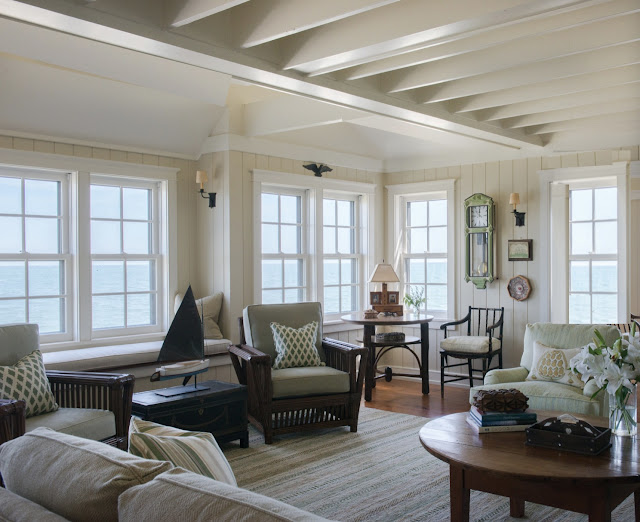Little Cranberry Island Station, Bar Point Road, Cranberry Isles, Maine
If you've always dreamed about living in an old lighthouse but haven't found it yet, I've got the next best thing for you: an 1879 Coast Guard Life Saving Station. Its views of the Atlantic can't be beat, and it's not too shabby inside, either.
It's on Little Cranberry Island's (or Isleford's) Southeast point with views of the Acadia Mountains and other islands.
It has 2,000 feet of shorefront and can be accessed by ferries that run five times daily.
The station was the first in its region, established by an Act of Congress on June 18, 1878.
It was decommissioned in 1946, and subsequently remodeled to be a little more family-friendly.
It's not winter-friendly though. The station has most recently been used for short-term summer rentals.
And, it comes furnished.
It was designed by architect J. Lake Parkinson who had a bit of career designing coast guard life-saving stations.
While the room above has original paneled walls and ceiling, the room below is a more recent addition:
If it were mine, I would give it more of a sense of age, using the design below for inspiration:
One of the unique things about this station is its central fireplace, part of the architect's "1876 Lake Superior Design."
The front of the fireplace faces the original living room:
I could be wrong, but I bet those are fresnel lenses (what they use on lighthouses) on that decorative screen.
This alcove looks like an addition, although it could have come in handy as a secondary watch post.
It's cute with a games table, but I would turn it into a dreamy lounge spot, like this:
The station has three bedrooms and two bathrooms in 3,074 square feet.
There's also a bed in the tower space, but it's not classified as a bedroom:
But wait, there's more. The property also includes a two bedroom, two bath guesthouse:
There's also a boathouse and dock a mile and half away.
Until I looked at the National Park Service records, I had no idea they put that much thought into the architecture of these stations and kept creating new designs. Starting in 1848, they would come up with new designs almost every time they built a station, and vary them by region. Southern stations, for example, often had wide porches.
The 1876 design used for this station was a pretty popular model:
But if you ask me, I'd say it looks more like the architect's 1879 Michigan design:
The Life Saving stations were staffed by volunteer crews that had routine daily drills. If you want a bit of a laugh, Mr. If It Were Mine prompted AI to create posters that they might have used. (Except there's no way they could have used these posters. AI has come a long way, but it obviously still has a ways to go. Especially on Thursday and Friday.)
Monday, practice with coast guard beach equipment and inspect boats. Tuesday, train with boats. Wednesday, drill with signal flags. Thursday, practice using beach equipment again. Friday, practice resuscitation. Saturday, clean the coast guard station.
On Sunday, put your feet up and enjoy the view.
The listing is here.










































